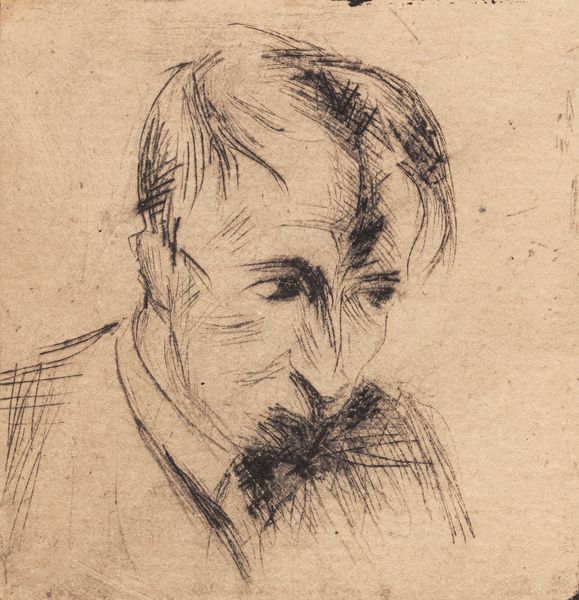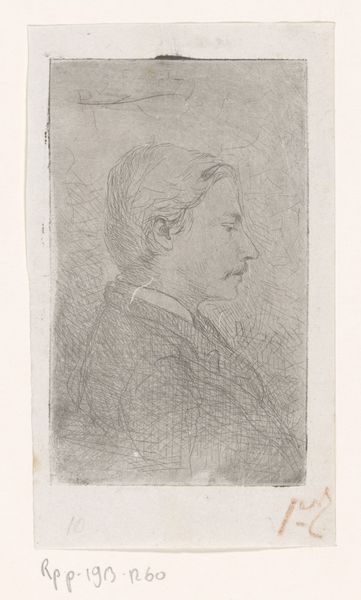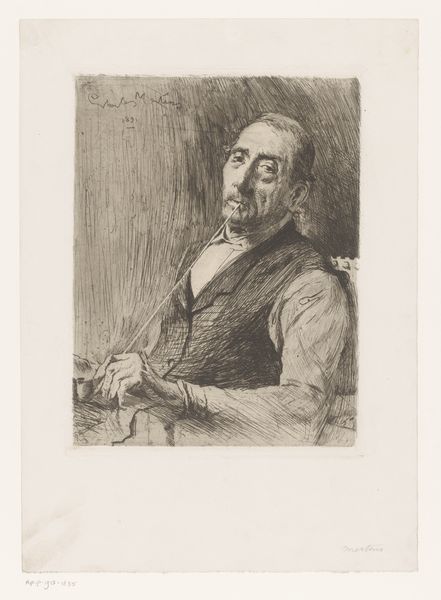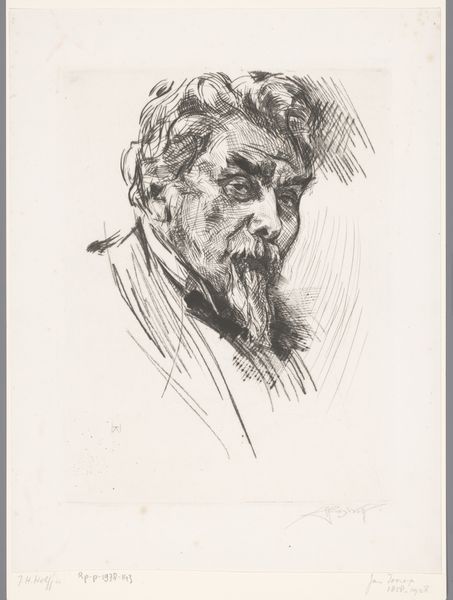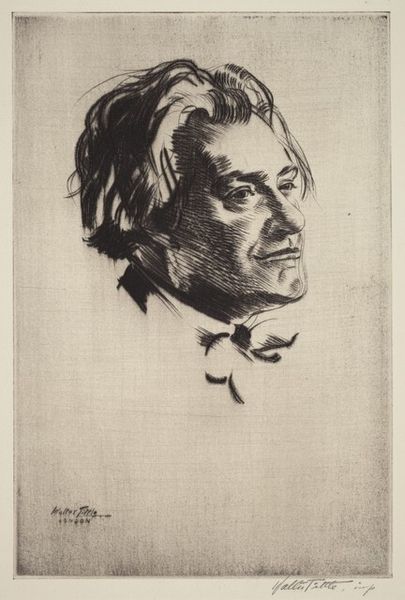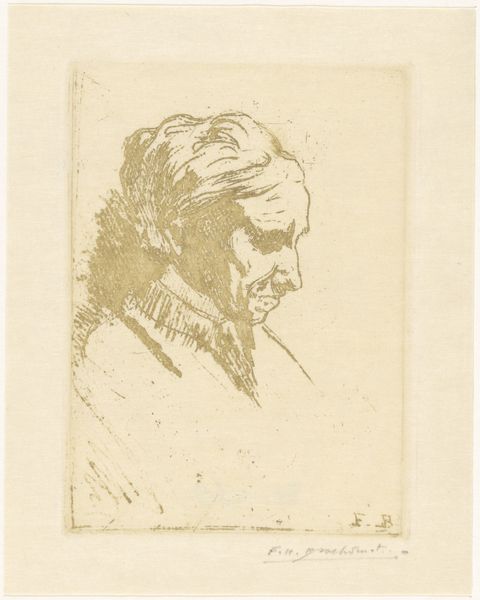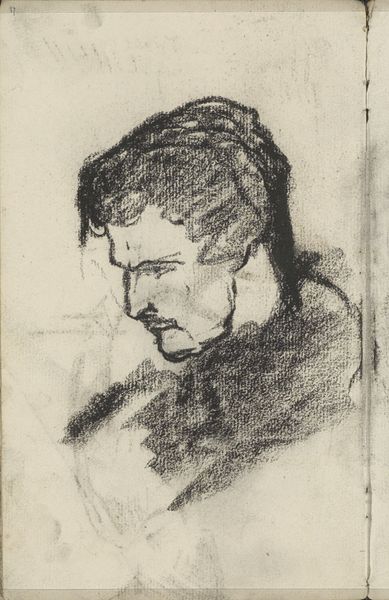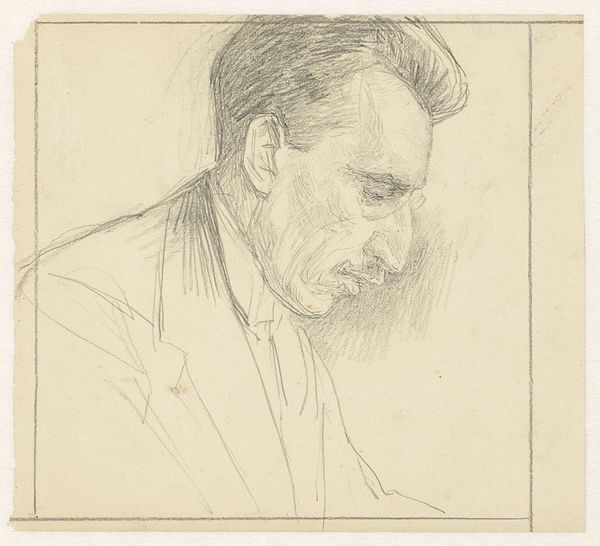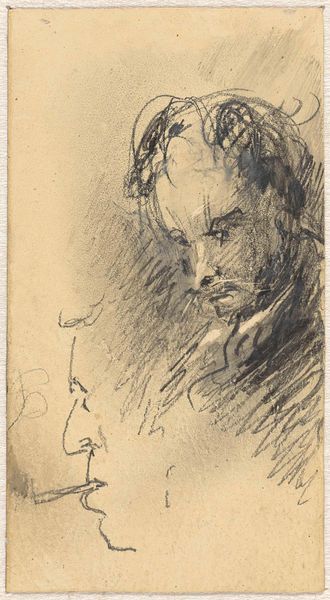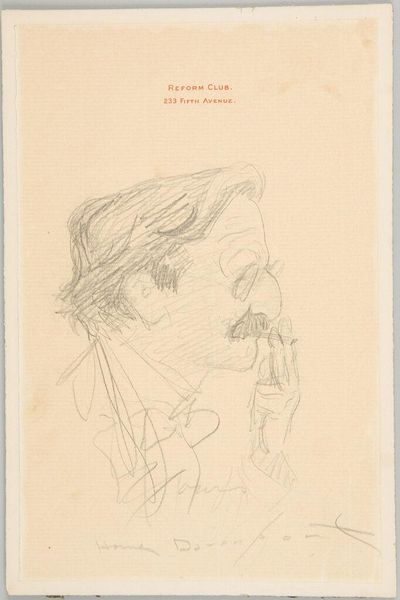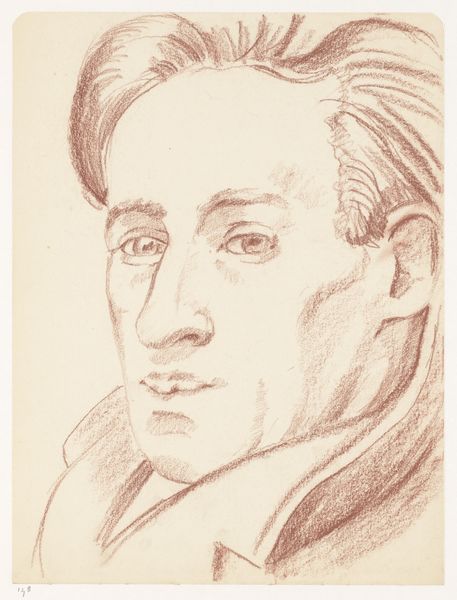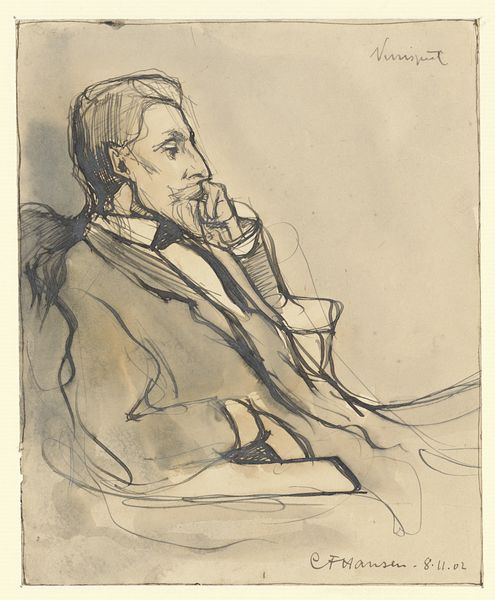
drawing, pencil
#
portrait
#
drawing
#
figuration
#
pencil drawing
#
romanticism
#
pencil
#
line
#
portrait drawing
Dimensions: 210 mm (height) x 160 mm (width) (bladmaal)
Curator: Here we have Johan Thomas Lundbye’s “Portrait of One of the Artist’s Brothers,” a pencil drawing completed in 1840. Editor: There’s a beautiful melancholic weight to this sketch. The downward gaze, the shadowed face—it all coalesces into a very somber mood. Curator: It’s interesting you say that. Lundbye was deeply invested in portraying the spirit and character of the Danish people, and portraiture offered an intimate means to explore individual identity within the context of national romanticism. Editor: I see what you mean, but look at the technique itself. The intricate cross-hatching gives such a strong sense of volume and texture. The light catches the planes of the face, the folds of the collar with stark efficiency, creating not only depth but a profound sense of internal drama. Curator: The image also reflects Lundbye’s close relationship with his family. It suggests the rise of the bourgeoisie as his brother may have supported Lundbye, a common practice at that time considering how hard it was for artists to survive through their craft. Editor: Indeed, the precision of the line is astonishing. Notice the way the lines vary in thickness, building volume without heavy shading. The drawing’s stark simplicity is what gives it its power. Curator: And it was also produced during a period of intense national self-reflection in Denmark, part of the cultural construction of identity—these portrayals played an important part in consolidating identity, offering recognizable archetypes during social upheaval. Editor: True, but beyond that historical reading, the work exists as a study in capturing fleeting emotion through economical means, like how a simple change in the contour of the mouth communicates a deep sense of sadness or concern. It really captures the human condition. Curator: The beauty is seeing how a personal moment—a portrait of a brother—is subtly woven into the larger societal shifts. Editor: Yes, an emotionally charged drawing, irrespective of time, or even beyond cultural significance. A testament to skill and quiet observation.
Comments
No comments
Be the first to comment and join the conversation on the ultimate creative platform.
